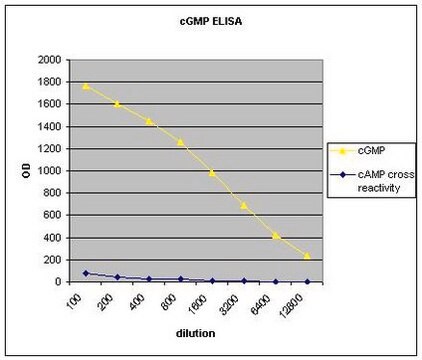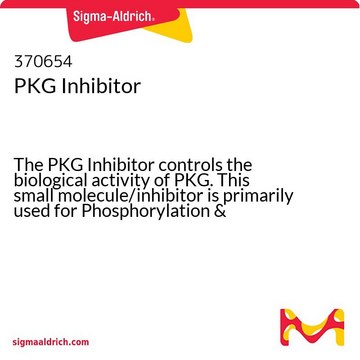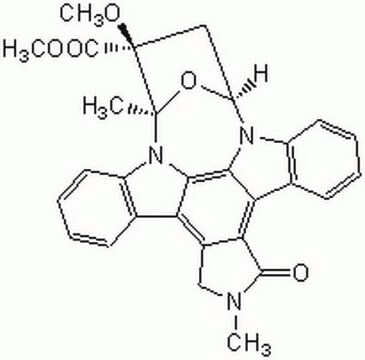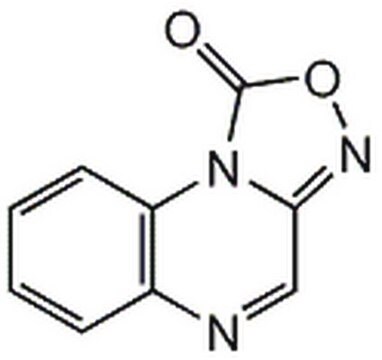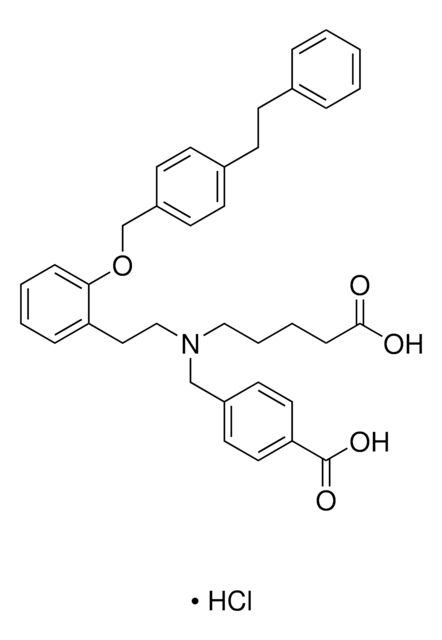B1381
8-Bromoguanosine 3′,5′-cyclic monophosphate sodium salt
≥98% (HPLC), powder
Synonym(s):
8-Br-cGMP, 8-Bromo-cyclic GMP
Sign Into View Organizational & Contract Pricing
All Photos(3)
About This Item
Empirical Formula (Hill Notation):
C10H10BrN5NaO7P
CAS Number:
Molecular Weight:
446.08
EC Number:
MDL number:
UNSPSC Code:
41106305
PubChem Substance ID:
NACRES:
NA.77
Recommended Products
Quality Level
Assay
≥98% (HPLC)
form
powder
solubility
H2O: 50 mg/mL
storage temp.
−20°C
SMILES string
[Na+].NC1=Nc2c(nc(Br)n2[C@@H]3O[C@@H]4COP([O-])(=O)O[C@H]4[C@H]3O)C(=O)N1
InChI
1S/C10H11BrN5O7P.Na/c11-9-13-3-6(14-10(12)15-7(3)18)16(9)8-4(17)5-2(22-8)1-21-24(19,20)23-5;/h2,4-5,8,17H,1H2,(H,19,20)(H3,12,14,15,18);/q;+1/p-1/t2-,4-,5-,8-;/m1./s1
InChI key
ZJRFCXHKYQVNFK-YEOHUATISA-M
Related Categories
General description
8-Bromoguanosine 3′,5′-cyclic monophosphate is a cell-permeable cGMP analog of cyclic guanosine 3′:5′-monophosphate (cGMP). It is a lipid-soluble analog used in cGMP based contraction studies in cardiomyocytes.
Application
8-Bromoguanosine 3′,5′-cyclic monophosphate sodium salt has been used:
- as a cyclic guanosine 3′:5′-monophosphate (cGMP) agonist in the collapse assay in retinal ganglion axons(10)
- as a component of reaction buffer in in vitro kinase activity assay of recombinant protein kinase (PKG)(11)
- as a cyclic nucleotide analog for the induction of cyclic nucleotide-gated channel (CNGA and CNGC) expression in human embryonic kidney cells(12)
Biochem/physiol Actions
8-Bromoguanosine 3′,5′-cyclic monophosphate has greater resistance to hydrolysis by phosphodiesterases than cGMP. Activates cGMP-dependent protein kinase. It slows or inhibits the intracellular calcium oscillations of tracheal smooth muscle cells in response to acetylcholine. 8-Bromoguanosine 3′,5′-cyclic monophosphate sodium salt mimics the effect of nitric oxide generating drugs. It modulates circadian rhythms and increases optic nerve impulses. In the eye 8-Bromoguanosine 3′,5′-cyclic monophosphate may favour transduction of non-R-type photoreceptors.
Cell-permeable cGMP analog having greater resistance to hydrolysis by phosphodiesterases than cGMP. Activates cGMP-dependent protein kinase. Slows or inhibits the intracellular calcium oscillations of tracheal smooth muscle cells in response to acetylcholine. Reported to mimic the effect of nitric oxide generating drugs.
Features and Benefits
This compound is a featured product for Cyclic Nucleotide research. Click here to discover more featured Cyclic Nucleotide products. Learn more about bioactive small molecules for other areas of research at sigma.com/discover-bsm.
This compound is featured on the PKA & PKG page of the Handbook of Receptor Classification and Signal Transduction. To browse other handbook pages, click here.
Storage Class Code
11 - Combustible Solids
WGK
WGK 3
Flash Point(F)
Not applicable
Flash Point(C)
Not applicable
Personal Protective Equipment
dust mask type N95 (US), Eyeshields, Gloves
Choose from one of the most recent versions:
Already Own This Product?
Find documentation for the products that you have recently purchased in the Document Library.
Customers Also Viewed
U C Garg et al.
The Journal of clinical investigation, 83(5), 1774-1777 (1989-05-01)
Endothelium-derived relaxing factor has been recently identified as nitric oxide. The purpose of this study was to determine if vasodilator drugs that generate nitric oxide inhibit vascular smooth muscle mitogenesis and proliferation in culture. Three chemically dissimilar vasodilators, sodium nitroprusside
Cyclic guanosine 3': 5'-monophosphate mimics the effects of light on a circadian pacemaker in the eye of aplysia
Eskin A, et al.
The Journal of Neuroscience, 4(10), 2466-2471 (1984)
Arun Govindapillai et al.
Scientific reports, 8(1), 6939-6939 (2018-05-04)
Patients born with congenital heart defects frequently encounter arrhythmias due to defects in the ventricular conduction system (VCS) development. Although recent studies identified transcriptional networks essential for the heart development, there is scant information on the mechanisms regulating VCS development.
8-bromo-cGMP reduces the myofilament response to Ca2+ in intact cardiac myocytes.
Shah AM, et al.
Circulation Research, 74(5), 970-978 (1994)
Katarina Špiranec Spes et al.
Arteriosclerosis, thrombosis, and vascular biology, 40(1), 159-174 (2019-10-18)
In proliferative retinopathies, complications derived from neovascularization cause blindness. During early disease, pericyte's apoptosis contributes to endothelial dysfunction and leakage. Hypoxia then drives VEGF (vascular endothelial growth factor) secretion and pathological neoangiogenesis. Cardiac ANP (atrial natriuretic peptide) contributes to systemic
Our team of scientists has experience in all areas of research including Life Science, Material Science, Chemical Synthesis, Chromatography, Analytical and many others.
Contact Technical Service
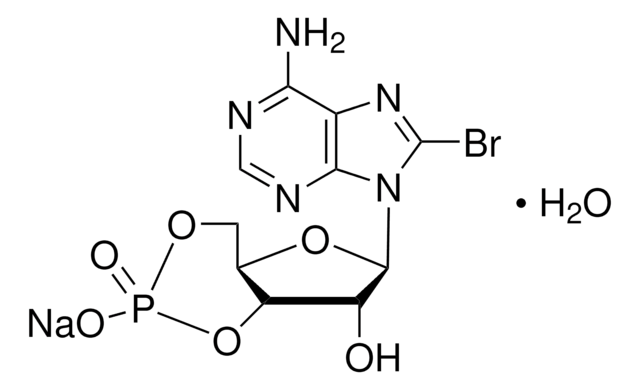
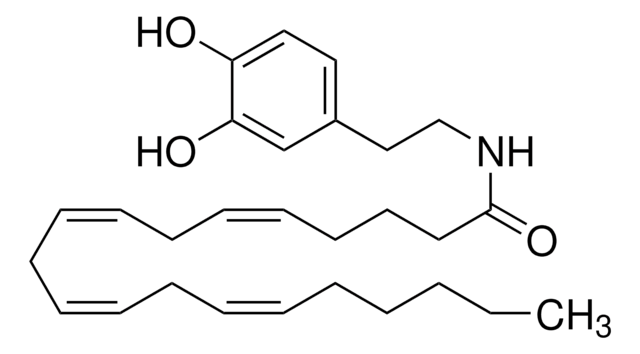


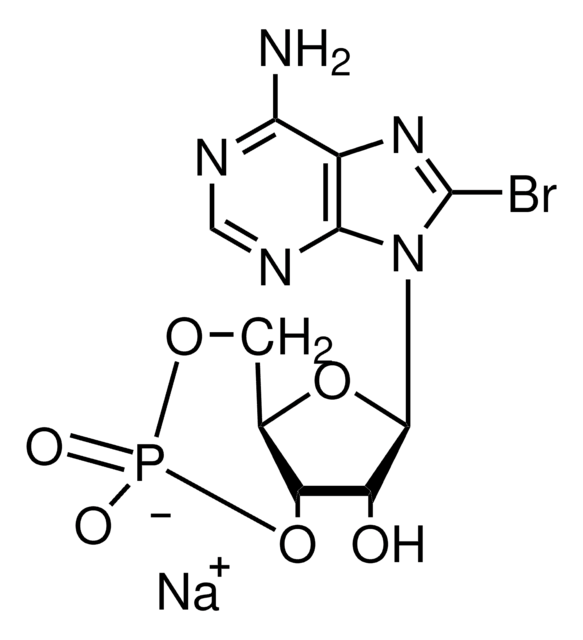




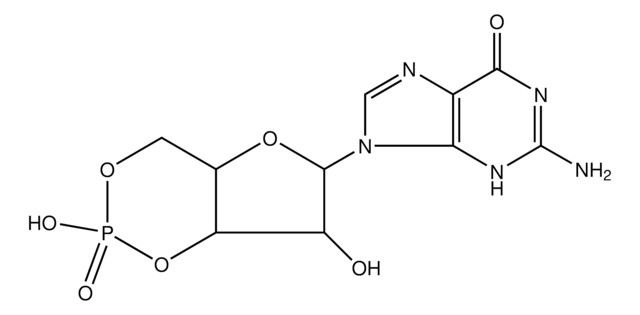
![1H-[1,2,4]Oxadiazolo[4,3-a]quinoxalin-1-one powder](/deepweb/assets/sigmaaldrich/product/structures/764/715/605dc5a5-0864-471b-a71e-bd2aa6553c1d/640/605dc5a5-0864-471b-a71e-bd2aa6553c1d.png)
